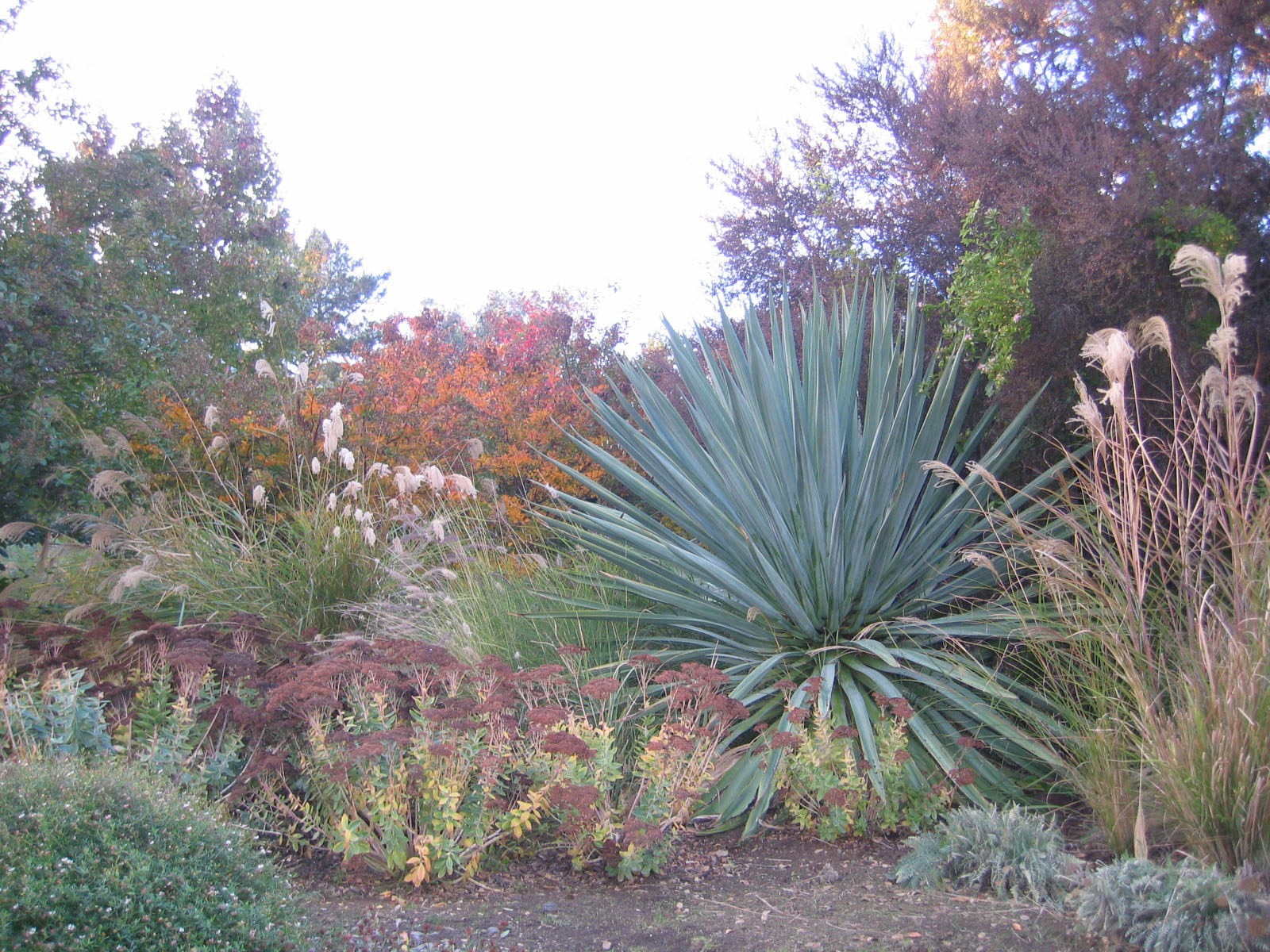For my planting scheme, I decided to look for inspiration from a number of sources. I began thinking about what was already at the site, what would fit in with other planting schemes around Writtle College, other landscape architects and also draw on my own expereinces.
The design brief requests 'low maintenance' and 'contemporary' planting, but I also referred back to my own personal ethos for garden design - this includes making a garden wildlife friendly, be environmentally sustainable and also draw on what I have been inspired by during my travels.
When I was working in China, I designed an eco-camp made from bamboo. There, bamboo is obviously local and grows everywhere and structurally, it looks fantastic, especially in a contemporary garden - it has good 'architectural lines'. As outlined in the materials section, bamboo is an excellent eco-friendly product, but, as a plant, it absorbs carbon di oxide and releases 35% more oxygen than most plants and trees - which is great for reducing our carbon footprint!
On a similar note, I was recently in the Cotswolds and noticed a crop that I hadn't seen before - it looked like bamboo, but it couldn't be - surely?! Why would they be growing bamboo in the Cotswolds? The only explination I could come up with was that it must be for all those garden canes the Brits loe so much for growing beans up. Howevere, curiosity got the better of me and I found myself googling 'Bamboo crops, Cotswolds'. What came up surprised me - it was actually Miscantus (i think giganteus) and it's actually a bio-mass crop. It grows to 3m tall, is high yielding, environmentally friendly, easy to grow, low maintenence, annual growing cycle, no pesticides or fertiliser, increases wildlife biodiversity, eligable for cross compliance and has a long life span - sounds like a winner to me! It ticks all the boxes I need it to to include it in my planting plan and as a bio-mass crop, its educational for all those agricultural students who spend their time revising in the beer garden!
Little did I know, when I came back to Writtle, miscanthus was everywhere - including the entrance to the college itself!:
Miscanthus - Writtle College
After talking to my tutor about my ideas for planting, he suggested I took a look at James Van Sweden's garden designs. I took out some books from the library including 'Gardening with Nature' and 'The Artful Garden' both by Van Sweden.
I loved his gardens - he uses grasses and structural plants more than he does actual hard landscaping, with what I think is more of an impact. Below are a selection of his gardens that have inspires my planting schemes:


















































